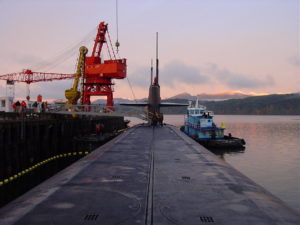 This post by Mark Neasbey, a Director of the Australian Centre for Value Management, is the third in a series of posts on the role of the capital budget in infrastructure decision making. In this post Mark examines the issues facing a mine expansion.
This post by Mark Neasbey, a Director of the Australian Centre for Value Management, is the third in a series of posts on the role of the capital budget in infrastructure decision making. In this post Mark examines the issues facing a mine expansion.
The mining operation planned to do two things – one, expand its processing facilities to deliver increased product volumes to exacting customer specifications and two, change from road to rail transport for the whole journey to the port. An important third aspect of importance was getting the timing to market right to optimise prices and revenue.
A design for the processing facility had been prepared as well as a proposed rail alignment and rolling stock and operating schedule, which enabled a direct loading from the processing plant to train wagons. Existing operations relied on road transport to a rail transfer point some 40kms from the mine plant. This needed a large workforce and truck fleet and associated scheduling activities to meet shipping schedules at the port.
In this instance the key decisions that the company executives had to make were how much disruption to supply its customers could tolerate during the weeks needed to expand the plant and what would be the reliability of the delivery program to meet the market opportunity. Their value management study helped them to assess the options to refine both the plant design and the proposed rail arrangements in a way that minimised disruptions to the existing plant operations – so product could still flow to customers and continue to generate cash flow for the business. This was possible with a relatively minor increase in use of capital funds in the works at the plant with the rail works staging able to occur in parallel.
Whilst ongoing operating costs were reduced and volumes (and price yield) increased there were some additional asset implications. A significant reduction in the workforce enabled a portion of the accommodation, recreation etc. facilities to be redeployed to another operation and otherwise disposed of, reducing ongoing site maintenance cost.
Concluding Comments A budget for asset projects is expected to change during the life of the project – but why it changes and whether that is up or down is something that must be actively managed. It should not be blindly adhered to, let alone ignored. An asset project affects operating (recurrent) costs and potential revenue as well as capital, which are also important considerations for the decision-makers.
Question for today: What ‘take-away’ do you take away from this?
 This post is by Mark Neasbey, a Director of the Australian Centre for Value Management. In this post Mark presents an example of the dilemma of the different attitudes to planning budgets identified in his last post – and how they may be overcome.
This post is by Mark Neasbey, a Director of the Australian Centre for Value Management. In this post Mark presents an example of the dilemma of the different attitudes to planning budgets identified in his last post – and how they may be overcome.
A major teaching hospital complex had reached a decision point about what the project must deliver vs the projected capital cost. Hospital facilities undergo periodic redevelopment driven by substantive changes in health care practices (models of care) and capacity to service growing populations.
Here the planning involved creating new facilities and demolishing older buildings. The models of care and health outcome objectives were clearly defined and endorsed but were complicated by the arrangement of services across the campus and the recurrent cost constraints on the health services. Moving functions around to create space for the new facilities was one aspect and another was inefficient service delivery arrangements which had evolved over time and which were compromised by the inflexibility of the existing facilities.
So it was not possible and not appropriate to just focus on the capital project cost.
These tensions were recognised and tested in a value management study process that worked through the schematic design, the relationships between services across the campus and the sequence and timing of moving services around and into the new facilities. This made it clear that the space requirements and associated capital project budget exceeded the original estimate.
Question was: Should the budget be left where it was and the scope of the initial redevelopment stage reduced, or should the budget be increased to enable it to be made larger?
By focusing on the clinical outcomes and hospital operating (i.e. recurrent) costs it was clear to senior management that a change in scope for the first stage was vital. Adding extra floor space in stage 1 enabled significant reduction in operating costs ($10m p.a.). But the extra $30m for stage 1 also enabled the second stage to be a much lower cost development – a simpler demolition and a ‘cleaner’ new build.
Question for today: What ‘take-away’ do you take away from this?
 This post by Mark Neasbey, a director in the Australian Centre of Value Management is the first of four that looks into the role of the budget in infrastructure decision making.
This post by Mark Neasbey, a director in the Australian Centre of Value Management is the first of four that looks into the role of the budget in infrastructure decision making.
We are about to undertake a capital project for which we need a planning budget. We have chosen a figure that we think is affordable and justifiable and off we go with planning. We employ architects, engineers, cost planners and other specialists to work up a proposal. They’re all qualified experts so we can rely upon their advice to give us a value for money solution. Right?
But now we strike a problem. To some the capital project’s budget figure becomes the target to realise and push beyond, because once the decision-makers see the brilliance and worth of the proposal they’ll get the extra money – that way we don’t have to compromise on anything! Right?
For others, it’s the opposite – a barrier that must not be exceeded – the limit that has to be imposed irrespective of what compromises must be made. We simply cannot afford to pay any more. This is because no capital project should be seen in isolation of the whole business. The organisation’s other priorities will also need to be appreciated so the best overall outcomes can be realised.
Both attitudes have some merit.
Our question today is: How can they be reconciled?

obsolete power plant
If you want to know why something is said or done, ’follow the dollar’ – in other words, find out who stands to benefit. Earlier this week an article in the Brisbane Times argued that future generations would ‘rue the day’ that the Government failed to take advantage of current low interest rates to invest more in infrastructure. The arguments were being put forward by a multinational company that constructs infrastructure! It is clearly in their interests, but is it in ours? The writer of the report wrote “Borrowing money to build the infrastructure for a future economy is not only the right thing to do, it is absolutely essential to our future economic prosperity.” But is it?
With low interest rates why isn’t the private sector investing if it is such a good idea? May be they cannot see the demand necessary to justify the extra capacity they would be creating? Also they are aware that the economy is in a state of flux and are probably, and sensibly, seeking more clarity on the future before they consider committing shareholder funds. Do we really want our governments to be any the less wise with our funds?
Economists, looking only at the cost of borrowing, often argue that we should borrow to spend at times when interest rates are low. In a recent ABC news item, Glenn Withers, economist at the ANU, argued that current low interest rates meant this was a good time to invest in infrastructure but Gary Bowditch, Head of the Better Infrastructure Initiative at Sydney University said the price of money and historically low interest rates were “completely meaningless in the current context, first we needed to be choosing the right projects”.
Question: Who do you agree with, and why?
 I have been told that, today, asset managers and other middle to senior management decision-makers, are becoming a victim of the drive for ‘efficiency’: resources are being reduced, workloads increased. So much so, that they have ‘no time to think’. If this is true there are some very serious consequences.
I have been told that, today, asset managers and other middle to senior management decision-makers, are becoming a victim of the drive for ‘efficiency’: resources are being reduced, workloads increased. So much so, that they have ‘no time to think’. If this is true there are some very serious consequences.
I recall a client of mine who wanted my help in developing strategic policy and planning for her more than two billion dollars of education assets: schools and colleges. Her day was back-to-back meetings, so much so that we had to get together for policy discussions over coffee at 7 am or else after her day eased off at 7 pm. I asked her, with such a hectic schedule, when did she ever get time to think. She smiled wryly, shrugged and said “When I get home!” I was concerned for this bright young woman but also for her staff who really needed the strategic direction that she should have had the time to give them. Then my concern moved to the students, who were being shortchanged by not having infrastructure decisions thoughtfully coping with changing needs, and to their parents and their future employers. The whole community misses out when infrastructure decision-makers do not have time to think.
And the individual misses out too. With increasing automation, jobs that do not require thinking are going to be taken over by robots. Do we really want infrastructure decisions made by computer algorithms, by robots?
Questions today
Is it true that many decision-makers believe they have ‘no time to think’?
Is this something we need to address, and if so, how could we do it?
 As a young economics student I was all for efficiency. So much so that if it could be proved that it was ‘efficient’ to send women and children down the mines – down they would have gone! But is economic efficiency to be our only criterion for evaluating government and infrastructure policy?
As a young economics student I was all for efficiency. So much so that if it could be proved that it was ‘efficient’ to send women and children down the mines – down they would have gone! But is economic efficiency to be our only criterion for evaluating government and infrastructure policy?
I thought of this when reading Leith van Oselin’s comment on the Federal Government’s submarine project. Writing in Macrobusiness as the ‘Unconventional Economist’, he nevertheless puts forward a very conventional economic argument. Using the release of the Productivity Councils’ 2014-15 Trade and Assistance Review as his starting off point, he argues: “Paying more for local builds, without sufficient strategic defence and spillover benefits to offset the additional cost, diverts productive resources (labour, capital and land) away from relatively more efficient (less assisted) uses. It can also create a permanent expectation of more such high cost work”. The article is titled “PC hits out at submarine pork”.
Our question today: Seems straightforward enough, doesn’t it? But is it?
 Strategic Asset Management doesn’t have to be difficult. It can be as simple as 1-2-3.
Strategic Asset Management doesn’t have to be difficult. It can be as simple as 1-2-3.
- One principle
- Two types of question
- Three asset measures
The One Principle: All strategic questions are portfolio questions
In other words if the question you are asking relates to a particular asset or just one part of a portfolio it is an operational or a tactical question to be dealt with by managers at that level. Strategic questions, that is portfolio level questions, need to be addressed ‘at the top’.
The Two Types of Strategic Questions – Direction Questions and Decision Questions
Direction Questions are those that help the agency see its current position and the direction it is moving in, and the direction it wishes to move in
Decision Questions are those that evaluate a particular capital proposal (new, renewal, modification or disposal) – but always in the light of the total portfolio.
The Three Asset Measures
1. Capacity – answering the question “how much?”
2. Condition – answering the question “what state is it in?”
3. Suitability – answering the question “how fit for purpose?” or “how effective?”
All three measures need to consider the context of the question, for example, when answering the ‘how much’ question we are simultaneously looking at ‘how much do we need’ and ‘how much have we got’. Knowing one without the other gives no basis for action. Similarly ‘what state is it in’ must be answered in the light of ‘what state do we need it to be in’. And ‘how fit for purpose?’ means understanding the requirements of the desired purpose.
For today’s Infrastructure Decision Making, a key question is:
How long do we WANT it to last?
All contexts have an implied time line. We used to believe that this time line was, effectively infinite, or at the least, very long. We would aim for ‘sustainability’ interpreted as keeping the asset operational for as long as possible.
Today, our strategic decision-making requires realising that this effectively infinite time line no longer applies.
Much more effort is now required to determine not only how long could it last, but how long – in the light of changing demand and supply – do we need it to last. This could well be the most significant strategic asset management decision that we now make.
Feel free to post your comments and questions

Recent Comments